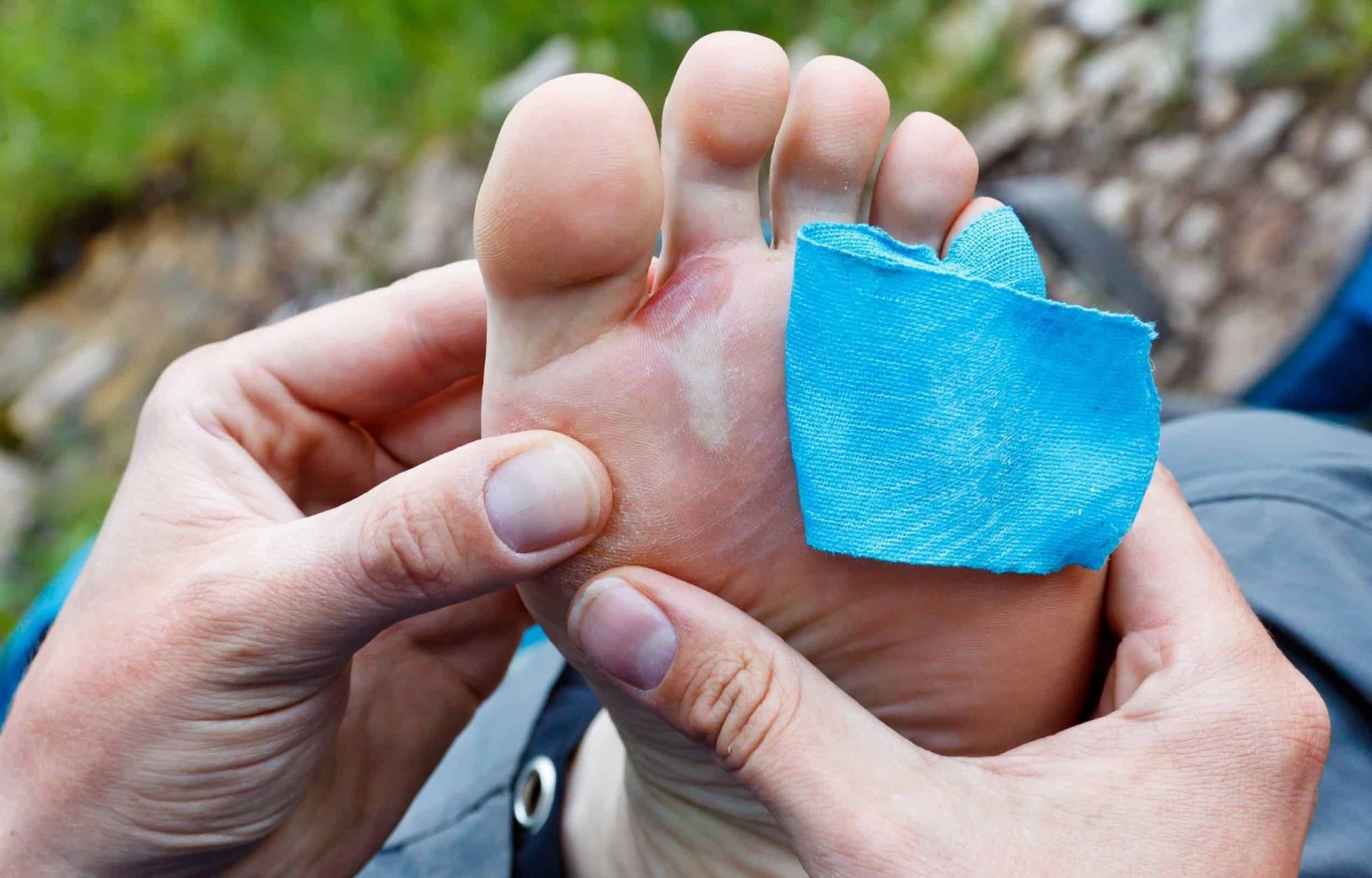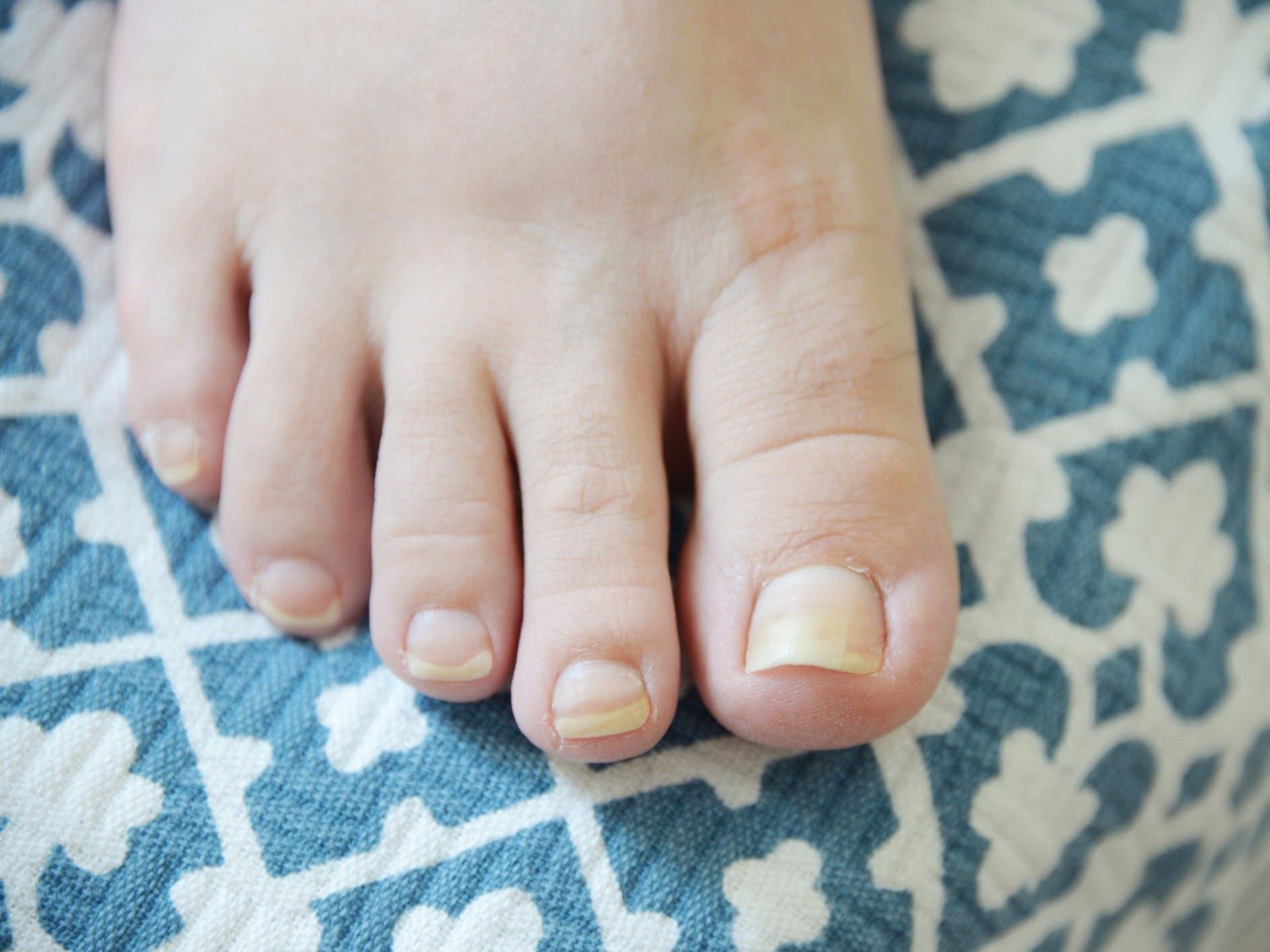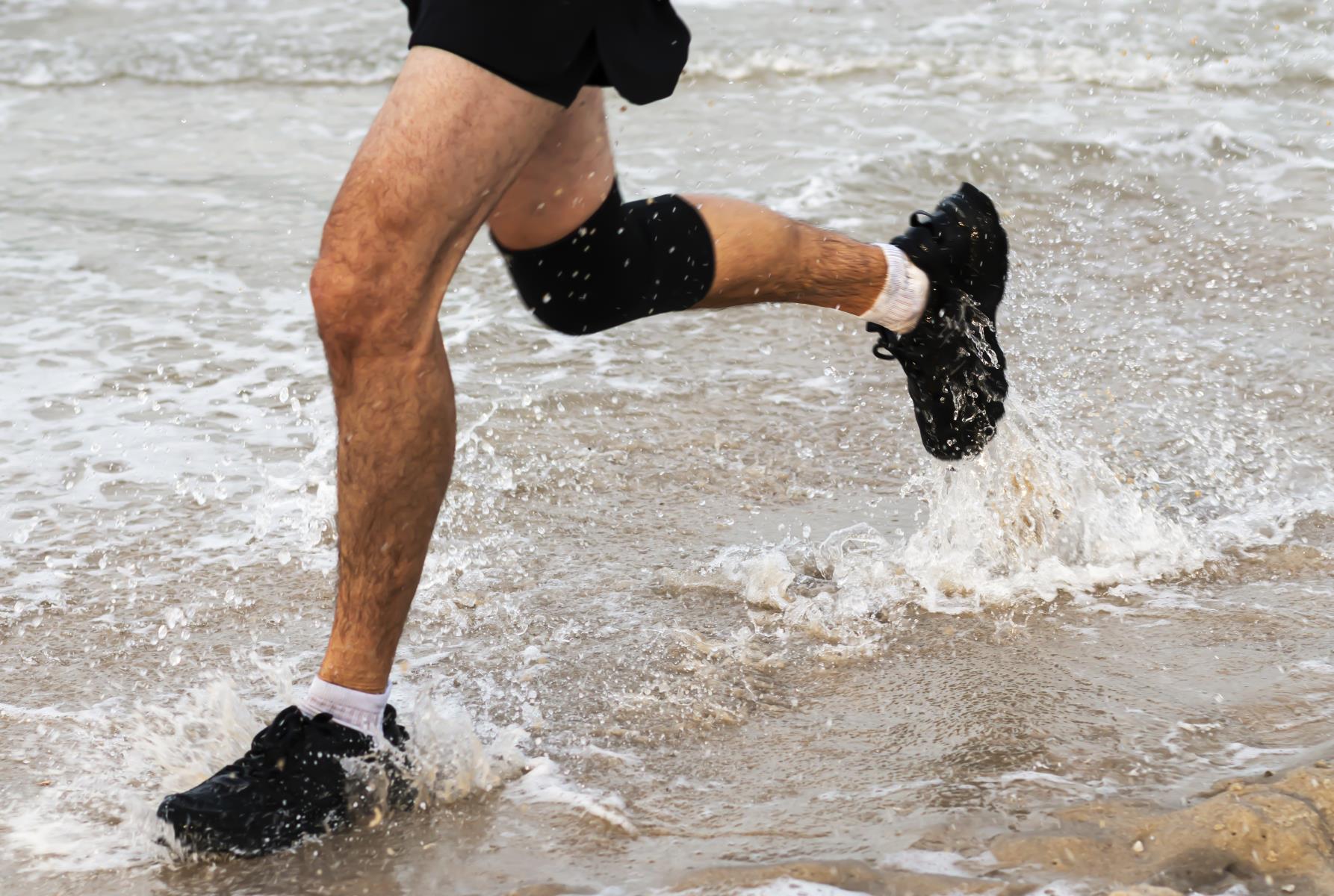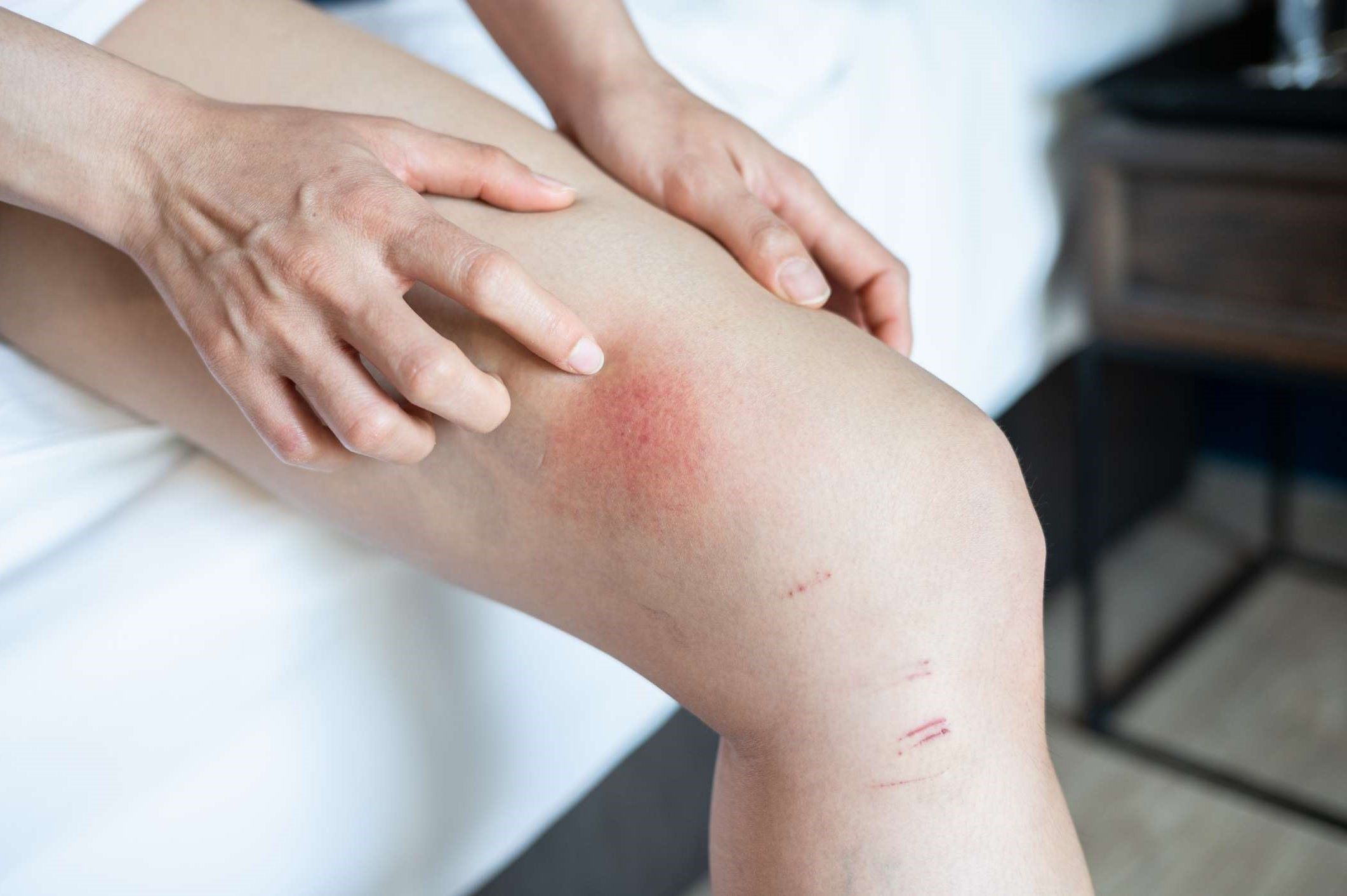Home>Health & Nutrition>Injury Prevention>Treating Bruised Toenails: What’s The Most Effective Method?
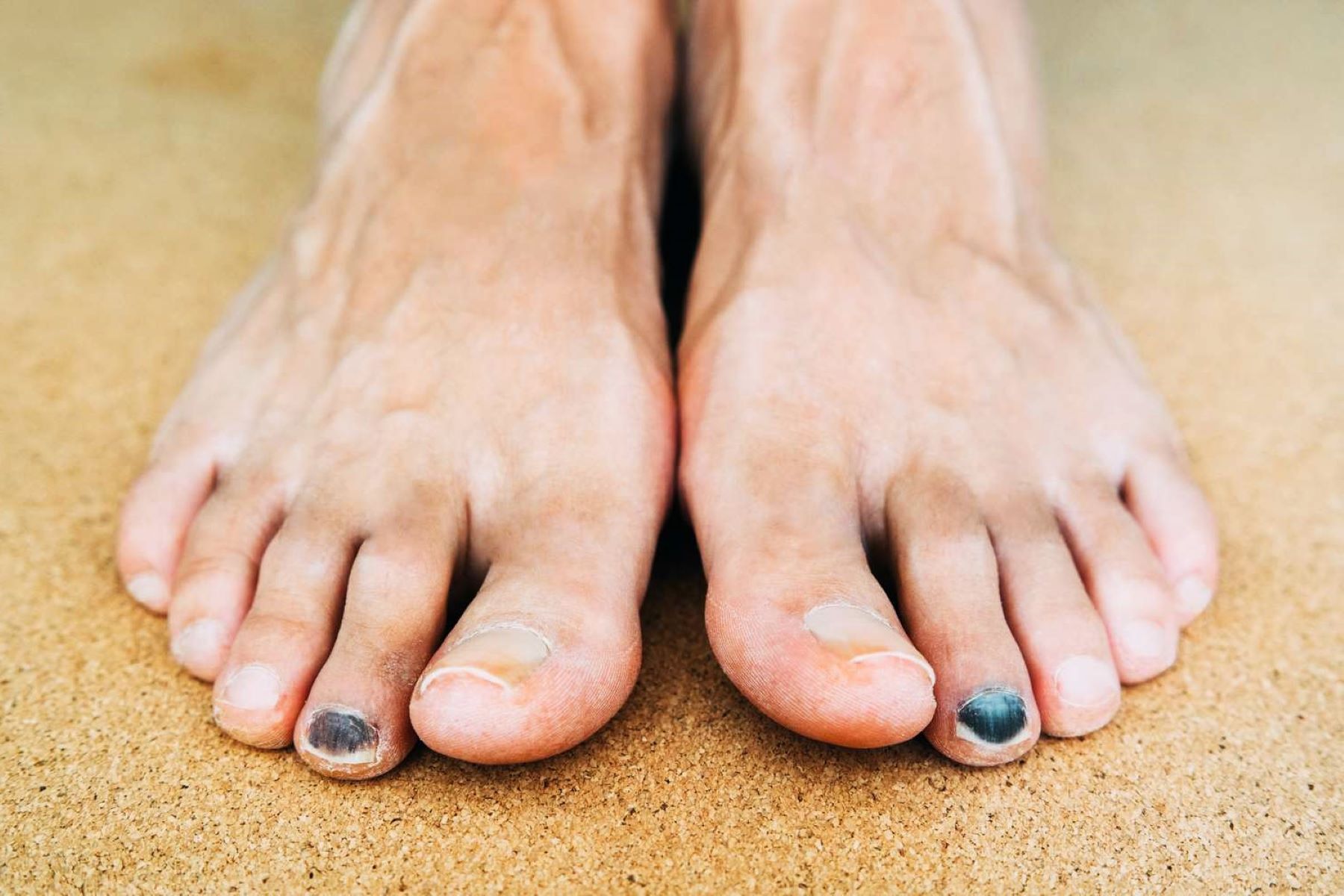

Injury Prevention
Treating Bruised Toenails: What’s The Most Effective Method?
Published: February 23, 2024
Learn the most effective methods for treating bruised toenails and preventing injuries. Discover expert tips for injury prevention.
(Many of the links in this article redirect to a specific reviewed product. Your purchase of these products through affiliate links helps to generate commission for Therunningadvisor.com, at no extra cost. Learn more)
Table of Contents
Understanding Bruised Toenails
Bruised toenails, also known as subungual hematomas, occur when blood accumulates beneath the nail due to trauma or injury. The nail bed, a highly sensitive area, can easily sustain damage from sudden impact or repetitive pressure, leading to discoloration and discomfort. Understanding the causes, symptoms, and treatment options for bruised toenails is essential for effective injury prevention and management.
When the toenail experiences trauma, such as from stubbing the toe or dropping a heavy object on it, the blood vessels beneath the nail can rupture, resulting in the accumulation of blood. This buildup of blood creates a characteristic dark discoloration under the nail, often accompanied by throbbing pain and tenderness. The pressure from the pooled blood can cause additional discomfort, making it essential to address the injury promptly.
Bruised toenails are not only painful but can also lead to complications if left untreated. The discoloration may spread as the blood accumulates further, and the nail may become detached if the injury is severe. Additionally, the risk of infection increases when the nail bed is compromised, emphasizing the importance of proper care and attention.
Understanding the mechanisms behind bruised toenails empowers individuals to take proactive measures to prevent such injuries. By wearing appropriate footwear, practicing caution in high-risk activities, and maintaining good foot hygiene, the likelihood of sustaining trauma to the toenails can be significantly reduced. Furthermore, recognizing the symptoms of bruised toenails enables individuals to seek timely treatment, preventing potential complications and promoting faster recovery.
In essence, comprehending the nature of bruised toenails equips individuals with the knowledge needed to minimize the risk of injury and address any trauma effectively. By staying informed and proactive, individuals can safeguard their toenail health and overall well-being, ensuring that they can continue to engage in their daily activities without the hindrance of painful toenail injuries.
Common Causes of Bruised Toenails
Bruised toenails, or subungual hematomas, can occur due to various factors, often stemming from accidental trauma or repetitive pressure on the toes. Understanding the common causes of bruised toenails is crucial for implementing preventive measures and minimizing the risk of injury.
-
Trauma from Accidental Impact: One of the primary causes of bruised toenails is accidental trauma, such as stubbing the toe against a hard surface or dropping a heavy object on it. The sudden impact can lead to the rupture of blood vessels beneath the nail, resulting in the accumulation of blood and subsequent discoloration.
-
Ill-Fitting Footwear: Wearing shoes that are too tight or have inadequate toe space can exert pressure on the toenails, leading to bruising over time. The constant friction and compression can cause microtrauma to the nail bed, increasing the likelihood of developing subungual hematomas.
-
Sports-Related Injuries: Athletes and individuals engaged in high-impact sports are susceptible to bruised toenails due to the repetitive stress and trauma experienced during activities such as running, jumping, or kicking. The continuous pressure on the toes can result in subungual hematomas, especially if proper footwear or protective gear is not utilized.
-
Improper Nail Trimming: Inadequate nail trimming techniques, such as cutting the nails too short or at an angle, can lead to trauma and damage to the nail bed. This can cause the nail to press against the surrounding skin, leading to bruising and discomfort.
-
Underlying Medical Conditions: Certain medical conditions, such as fungal nail infections or structural abnormalities in the toes, can predispose individuals to bruised toenails. These conditions may weaken the integrity of the nails or make them more susceptible to trauma, increasing the likelihood of developing subungual hematomas.
By recognizing these common causes of bruised toenails, individuals can take proactive steps to minimize the risk of injury. This includes wearing properly fitted footwear, practicing caution during physical activities, adopting appropriate nail care practices, and addressing any underlying medical concerns. Through these preventive measures, the incidence of bruised toenails can be significantly reduced, promoting overall foot health and well-being.
Symptoms of Bruised Toenails
The symptoms of bruised toenails, also known as subungual hematomas, manifest as distinct indicators of trauma and injury to the nail bed. Recognizing these symptoms is crucial for prompt identification and appropriate management of the condition.
-
Discoloration: One of the primary symptoms of a bruised toenail is the noticeable discoloration beneath the nail. The accumulation of blood results in a dark, purplish-black hue, often extending across the affected nail. This discoloration is a clear indication of subungual hematoma and is typically visible through the translucent nature of the nail.
-
Pain and Tenderness: Bruised toenails are accompanied by varying degrees of pain and tenderness. The pressure exerted by the pooled blood beneath the nail can cause throbbing discomfort, especially when pressure is applied to the affected toe. The sensitivity of the nail bed may also lead to discomfort when wearing shoes or engaging in physical activities.
-
Swelling and Pressure: In addition to discoloration and pain, individuals with bruised toenails may experience localized swelling and a sensation of pressure around the affected nail. The buildup of blood beneath the nail can create a sense of tightness and discomfort, further indicating the presence of a subungual hematoma.
-
Restricted Movement: Severe cases of bruised toenails may result in restricted movement of the affected toe. The discomfort and pressure caused by the accumulated blood can limit the range of motion, making it challenging to flex or extend the toe without experiencing heightened discomfort.
-
Changes in Nail Texture: As the bruised toenail heals, changes in the texture and appearance of the nail may become apparent. The affected nail may develop ridges or irregularities as it grows out, reflecting the impact of the previous injury.
Recognizing these symptoms is essential for differentiating bruised toenails from other nail-related conditions and seeking appropriate treatment. By understanding the distinct signs of subungual hematomas, individuals can take proactive measures to address the injury, alleviate discomfort, and promote effective healing. Prompt identification of these symptoms enables individuals to implement suitable home remedies or seek medical attention as needed, ensuring optimal recovery and minimizing the risk of complications associated with bruised toenails.
Home Remedies for Treating Bruised Toenails
When it comes to addressing bruised toenails, several effective home remedies can help alleviate discomfort, promote healing, and prevent potential complications. These remedies are accessible, easy to implement, and can significantly contribute to the overall well-being of the affected individual.
Epsom Salt Soaks
Soaking the bruised toenail in warm water mixed with Epsom salt can provide soothing relief and aid in reducing inflammation. Epsom salt, known for its therapeutic properties, can help alleviate pain and tenderness while promoting the body's natural healing processes.
Arnica Gel Application
Arnica gel, derived from the Arnica montana plant, is renowned for its anti-inflammatory and pain-relieving properties. Gently applying Arnica gel to the bruised toenail can help reduce swelling, alleviate discomfort, and support the healing of the affected nail.
Cold Compress
Applying a cold compress to the bruised toenail can effectively reduce pain, swelling, and discomfort. The cold temperature helps constrict blood vessels, limiting the spread of blood beneath the nail and providing relief from throbbing sensations.
Elevation
Elevating the affected foot can aid in reducing swelling and minimizing pressure on the bruised toenail. Keeping the foot elevated, especially during periods of rest, promotes improved blood circulation and facilitates the body's natural healing mechanisms.
Protective Footwear
Wearing comfortable, well-fitted shoes that provide adequate toe space can prevent further trauma to the bruised toenail. Avoiding tight or constrictive footwear is essential to minimize pressure on the affected nail and promote a conducive environment for healing.
Gentle Nail Care
Practicing gentle nail care, such as keeping the toenails trimmed to a moderate length and avoiding excessive pressure on the affected nail, can prevent additional discomfort and promote the natural healing process. It is important to handle the bruised toenail with care to avoid exacerbating the injury.
Implementing these home remedies can significantly contribute to the effective management of bruised toenails, promoting comfort and supporting the body's healing process. However, if the symptoms persist or worsen, seeking medical attention is advisable to ensure proper evaluation and treatment. By combining home remedies with proactive measures, individuals can effectively address bruised toenails and facilitate a smoother recovery process.
Medical Treatments for Bruised Toenails
In cases where bruised toenails cause persistent pain, significant swelling, or potential complications, seeking medical treatment becomes essential to ensure proper evaluation and effective management of the injury. Medical professionals may employ various treatments to address bruised toenails and alleviate discomfort, depending on the severity of the condition.
Drainage of Subungual Hematoma
For severe cases of bruised toenails where a large amount of blood accumulates beneath the nail, medical intervention may involve drainage of the subungual hematoma. This procedure is typically performed by a healthcare provider and involves creating a small hole in the nail to release the trapped blood, relieving pressure and discomfort. By draining the accumulated blood, the risk of nail detachment and associated complications can be minimized, promoting faster healing and recovery.
Nail Trimming or Removal
In instances where the bruised toenail is severely damaged or detached, medical professionals may opt to trim or remove the affected nail to facilitate proper healing. This approach helps prevent the nail from catching on surrounding tissues, reduces the risk of infection, and promotes the growth of a healthy nail. Nail trimming or removal is performed with precision to minimize discomfort and support the restoration of the nail bed.
Pain Management
Medical treatments for bruised toenails often include pain management strategies to alleviate discomfort and improve the overall experience of the affected individual. Healthcare providers may recommend over-the-counter pain relievers or prescribe medication to address pain and inflammation associated with subungual hematomas. By effectively managing pain, individuals can experience enhanced comfort and mobility during the healing process.
Evaluation of Underlying Conditions
In some cases, bruised toenails may be indicative of underlying medical conditions or structural abnormalities that require attention. Medical professionals may conduct thorough evaluations to identify any predisposing factors contributing to recurrent bruising or trauma to the toenails. By addressing underlying conditions, such as fungal nail infections or anatomical irregularities, targeted treatment can be implemented to prevent future occurrences of bruised toenails.
Professional Wound Care
For individuals with severe bruised toenails or compromised nail beds, professional wound care may be necessary to ensure proper healing and reduce the risk of infection. Healthcare providers can offer specialized wound care services, including the application of dressings, topical treatments, and ongoing monitoring to promote optimal recovery. Professional wound care plays a crucial role in safeguarding the integrity of the nail bed and supporting the regrowth of the affected nail.
By considering these medical treatments for bruised toenails, individuals can gain insights into the potential interventions available to address the injury effectively. Seeking medical attention when experiencing persistent or severe symptoms of bruised toenails is crucial for receiving personalized care and guidance tailored to the specific needs of the individual. Through collaborative efforts with healthcare professionals, individuals can navigate the treatment process with confidence, ensuring comprehensive care and support for their bruised toenails.
Preventing Bruised Toenails
Preventing bruised toenails is paramount in maintaining optimal foot health and minimizing the risk of painful injuries. By implementing proactive measures and adopting mindful practices, individuals can significantly reduce the likelihood of sustaining subungual hematomas. Here are effective strategies for preventing bruised toenails:
Read more: The Essentials Of Fungal Toenail Infections
Proper Footwear Selection
Choosing well-fitted footwear that provides ample toe space is essential for preventing bruised toenails. Shoes that are too tight or constrictive can exert pressure on the toes, increasing the risk of trauma to the nail bed. Opting for footwear with sufficient room for toe movement and adequate cushioning can help mitigate the impact of accidental knocks or repetitive stress during physical activities.
Protective Gear for Sports and Physical Activities
Engaging in sports or activities that involve repetitive foot movements or potential impact requires the use of appropriate protective gear. Wearing protective footwear designed for specific sports, such as cleats for soccer or running shoes with adequate toe protection, can help safeguard the toes from trauma. Additionally, utilizing protective padding or guards during high-impact activities can provide an extra layer of defense against bruised toenails.
Mindful Nail Care Practices
Practicing mindful nail care is crucial for preventing bruised toenails. Individuals should avoid cutting their toenails too short or at sharp angles, as this can increase the risk of trauma to the nail bed. Keeping the toenails trimmed to a moderate length and maintaining a straight across or slightly curved nail shape can help minimize the likelihood of injury. Furthermore, handling the toenails with care and avoiding excessive pressure during grooming can contribute to overall nail health.
Vigilance in High-Risk Environments
Remaining vigilant in high-risk environments, such as construction sites or areas with potential hazards, is essential for preventing accidental trauma to the toes. Being mindful of surroundings and taking precautions to avoid collisions with objects or surfaces can significantly reduce the risk of sustaining bruised toenails. Practicing situational awareness and wearing protective footwear in such environments can serve as proactive measures for injury prevention.
Regular Foot Inspections
Conducting regular inspections of the feet and toenails can aid in early detection of potential issues and prompt intervention. Individuals should routinely examine their toenails for any signs of discoloration, swelling, or discomfort, as these may indicate the presence of a bruised toenail or underlying concerns. Early identification of symptoms allows for timely implementation of preventive measures and appropriate care.
By integrating these preventive strategies into daily routines and activities, individuals can actively reduce the occurrence of bruised toenails and promote overall foot health. Emphasizing proactive measures, such as proper footwear selection, protective gear utilization, mindful nail care, environmental vigilance, and regular foot inspections, can contribute to a proactive approach to injury prevention. Through these efforts, individuals can enjoy enhanced foot comfort and minimize the impact of bruised toenails on their daily lives.
When to Seek Medical Attention for Bruised Toenails
Seeking medical attention for bruised toenails is crucial in certain circumstances to ensure proper evaluation and timely intervention. While many cases of subungual hematomas can be effectively managed with home remedies, there are specific indicators that warrant a visit to a healthcare professional.
Persistent or Severe Pain: If the pain associated with a bruised toenail persists or intensifies despite home remedies and self-care measures, it is advisable to seek medical attention. Persistent pain may indicate underlying complications or the need for specialized treatment to alleviate discomfort effectively.
Significant Swelling and Discomfort: Experiencing significant swelling, redness, or discomfort around the bruised toenail can signal the presence of complications that require medical assessment. Unusual swelling or inflammation may indicate the need for drainage of the subungual hematoma or professional wound care to prevent further complications.
Restricted Movement and Function: When a bruised toenail significantly restricts the movement and function of the affected toe, it is essential to consult a healthcare provider. Limited mobility or difficulty bearing weight on the affected foot may necessitate medical evaluation to assess the extent of the injury and determine appropriate treatment options.
Visible Signs of Infection: If the bruised toenail shows signs of infection, such as increased redness, warmth, or the presence of pus, immediate medical attention is necessary. Infections can exacerbate the injury and lead to more severe complications if left untreated, making prompt evaluation and treatment essential.
Underlying Medical Conditions: Individuals with pre-existing medical conditions affecting the feet or toenails, such as diabetes or circulatory disorders, should seek medical attention for bruised toenails. These conditions can heighten the risk of complications and necessitate specialized care to ensure optimal healing and prevent further issues.
History of Recurrent Bruising: Individuals with a history of recurrent bruised toenails or persistent nail trauma should consider consulting a healthcare professional. Chronic bruising may indicate underlying concerns that require thorough evaluation and targeted interventions to prevent future occurrences and promote long-term nail health.
By recognizing these indicators and knowing when to seek medical attention for bruised toenails, individuals can prioritize their well-being and receive appropriate care when necessary. Prompt evaluation by a healthcare professional can lead to personalized treatment plans, effective pain management, and comprehensive guidance for optimal recovery from bruised toenails.


